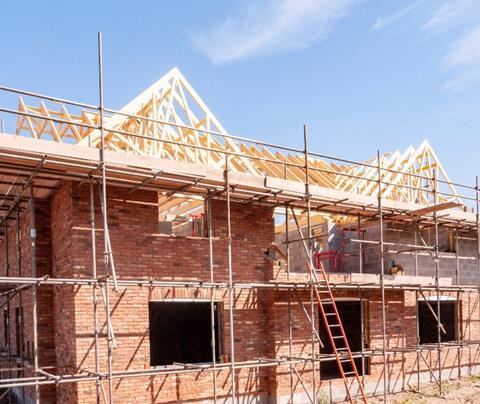Government remains ‘confident’ all of the fund will be spent despite the scrapping of several schemes due to rising construction costs
Only a third of the £4.2bn Housing Infrastructure Fund aimed at increasing housebuilding and unlocking hundreds of thousands of new homes has so far been spent, a Freedom of Information request has revealed.

The FOI request made by local government researcher Jack Shaw, the findings of which were reported in the Financial Times (FT) yesterday, found that £1.3bn out of the £4.2bn pot has been spent since the fund was created.
The Housing Infrastructure Fund (HIF) was set up in 2017 to accelerate housebuilding by providing local authorities with grant funding needed for land preparation, transport infrastructure and education facilities in order to unlock development sites.
The government stated that the key aim of the fund, administered by Homes England, was to unlock new homes “in areas with the greatest housing demand”.
>> See also: DLUHC admits handing £1.9bn of housing funds back to Treasury
The government confirmed to the FT that work had begun on fewer than one in 10 of the promised homes. The delivery target of homes to be delivered through the HIF had also been reduced from 340,000 to 270,000, after a number of schemes were scrapped or had funding withdrawn.
It is understood that some projects funded through the HIF have been stalled or become undeliverable since government funding was agreed due to rising construction costs caused by inflation leading to developers putting schemes on hold.
In December, the government pulled funding from a £170m council-led housing scheme in Medway, Kent, due to concerns that it could no longer be delivered under its current budget.
Marcus Dixon, director of UK residential research at the real estate firm JLL, told the FT that while the fund had aimed to “unlock housing delivery”, since then “rapidly rising build costs and an increased regulatory burden” had led developers to put schemes on hold.
Due to costs rising by as much as 40% since the pandemic, Dixon explained that schemes began to face funding shortfalls, “in some cases in the tens of millions of pounds”.
A DLUHC spokesperson said the department was “confident” that it will “provide all £4.2bn of the HIF to local authorities across all regions of England, unlocking up to 270,000 homes. More than 23,000 homes have already started construction and expenditure is on track.”
The spokesperson added: “Major infrastructure projects understandably take time to deliver and we recognise the challenging backdrop that capital programmes have experienced due to cost pressures and other factors.
“We continue to work very closely with Homes England to make sure all the programme budget is spent and the maximum possible housing capacity is unlocked.”
Inflation has caused various housing schemes to be stalled, with the DLUHC admitting in July 2023 that it had handed back £1.9bn in affordable housing funding to the Treasury for the 2022/23 financial year.
The Royal Institution of Chartered Surveyors’ quarterly sentiment survey from November 2023 indicated that the net balance of private housebuilding activity had dropped to -26%, while development of public housing was at -7%, the lowest levels since the pandemic in 2020.


























No comments yet